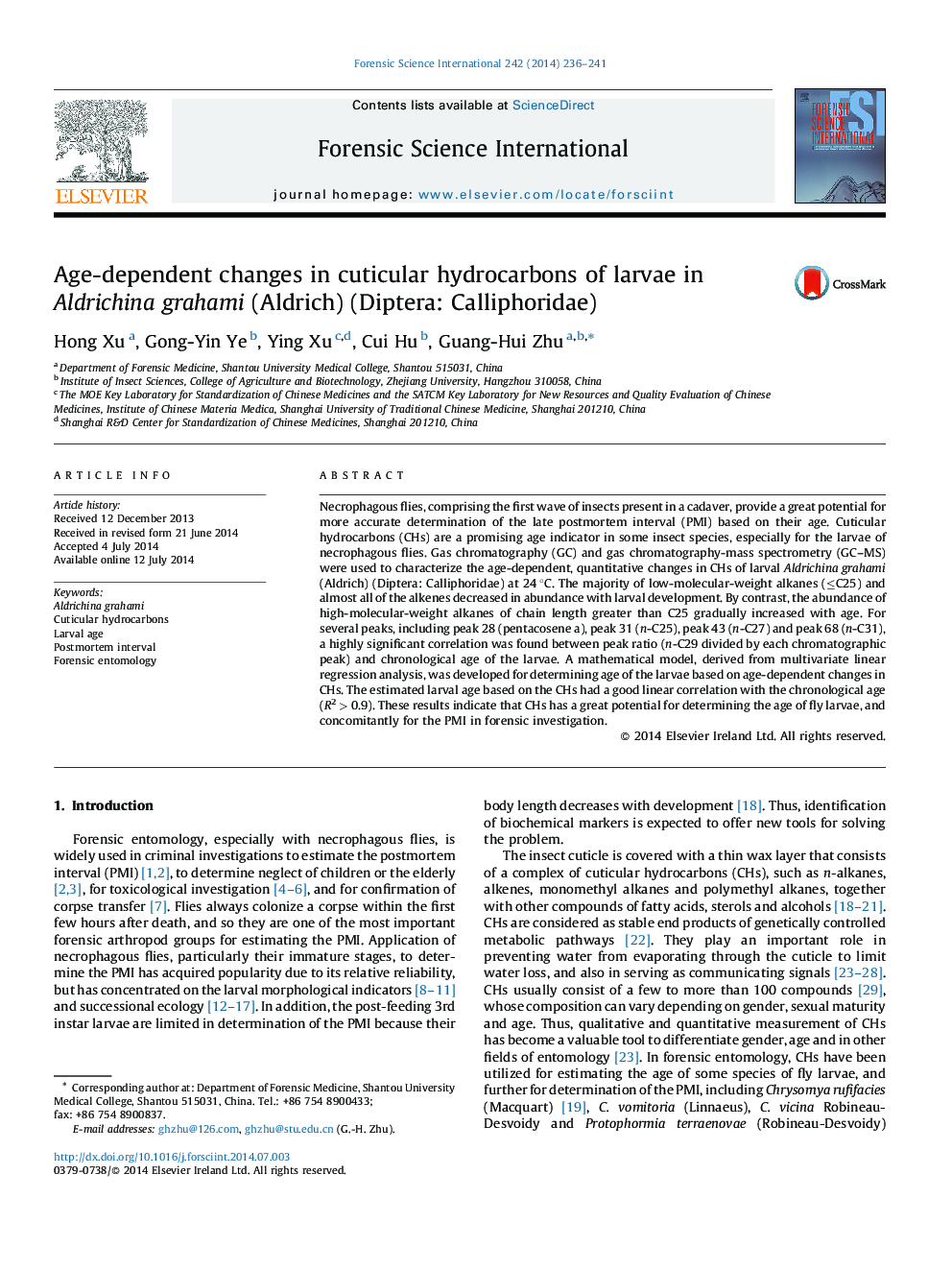| Article ID | Journal | Published Year | Pages | File Type |
|---|---|---|---|---|
| 95472 | Forensic Science International | 2014 | 6 Pages |
•Profile of larval cuticular hydrocarbons (CHs) changes with age.•3-Day-old larvae have a specific CH profile; the older own more heavier CHs.•Larvae of various ages can be discriminated by composition of CHs.•A model based on CHs is developed to well determine the larval age.
Necrophagous flies, comprising the first wave of insects present in a cadaver, provide a great potential for more accurate determination of the late postmortem interval (PMI) based on their age. Cuticular hydrocarbons (CHs) are a promising age indicator in some insect species, especially for the larvae of necrophagous flies. Gas chromatography (GC) and gas chromatography-mass spectrometry (GC–MS) were used to characterize the age-dependent, quantitative changes in CHs of larval Aldrichina grahami (Aldrich) (Diptera: Calliphoridae) at 24 °C. The majority of low-molecular-weight alkanes (≤C25) and almost all of the alkenes decreased in abundance with larval development. By contrast, the abundance of high-molecular-weight alkanes of chain length greater than C25 gradually increased with age. For several peaks, including peak 28 (pentacosene a), peak 31 (n-C25), peak 43 (n-C27) and peak 68 (n-C31), a highly significant correlation was found between peak ratio (n-C29 divided by each chromatographic peak) and chronological age of the larvae. A mathematical model, derived from multivariate linear regression analysis, was developed for determining age of the larvae based on age-dependent changes in CHs. The estimated larval age based on the CHs had a good linear correlation with the chronological age (R2 > 0.9). These results indicate that CHs has a great potential for determining the age of fly larvae, and concomitantly for the PMI in forensic investigation.
